座椅新概念
我们的坐姿会引起慢性腰背疼痛吗?越来越多的人体工学专家将大多数人的这一病因归咎于此。此外,我们正越来越快地进入一个信息处理的社会,越来越多的员工长时间地坐着办公,达成生意。我们发现坐姿开始在我们的生活中扮演越来越重要的角色。对于现代的研究者来说,20年前由丹麦外科医生A.C. Mandal, M.D.提出的许多观点在近代的研究中都得到了验证。他认为评估长期坐着办公的工人,脊椎应看做一个主要的范式转轴。不仅如此,Mandal认为几个世纪以来,人们认为的正确坐姿 – 躯干与臀部呈90°垂直 – 是完全错误的。这种传统坐姿,我们如今仍然可见,并且许多人仍然认为是正确合适的坐姿,被发现会降低脊柱腰部的脊椎前凸(自然的内曲),加大脊椎后弯 (或者称为脊柱这部分区域会向外弓). 基于健康的坐姿,这正好和我们想要实现的状态相反 – 我们应该尽量避免后背脊柱后凸畸形,保持一个适度的腰椎前凸。对于人体工学的坐姿来说,就是要将这种自然静态的脊椎曲线体现到我们的坐姿上来,既不要压扁,也不要加大这一曲线。
我们笔直站立时,脊椎呈一个自然的腰椎前凸的姿势,而传统的坐姿很难避免腰椎后凸。现在,几乎所有的专家都认为无论站立还是坐着,一个适度的腰椎前凸对保持一个健康的脊椎至关重要。
传统90°直立坐姿的一些已知负面影响:
•后背拱起,直立的脊椎会松垮下来,导致肩膀、颈部被身体内包的姿势,后背肌肉拉伸紧张,椎骨错位,后背呈弓形(脊椎后凸)。
•下肢血液循环减弱,可能会导致静脉曲张,皮下脂肪堆积,双脚浮肿,疲倦和腿部凝血风险。
•久坐时,我们身体也承受着静态体重,从而带来椎间盘供血不足,肌肉很快就会疲倦。试想参加会议时,一整天坐在那种方便折叠的椅子上,通常酒店会场喜欢使用这类椅子,看看一天结束后,你是否不会感觉非常疲惫。
•随着课堂电脑的普及,研究发现儿童脊椎侧凸——青春生长发育时期后天形成的一种脊柱异变曲线,传统的90°坐姿极其相关。(Koskelo et al, 2001)
Mandal强调这样一种坐姿,保持我们的脊椎处于自然的放松位置。他称之为平衡坐姿,同水平方向,臀部打开呈135° 或者座前向下倾斜45°-55°,由此创造出一个下半身最优的平衡姿态。这种状态下,我们无需靠背支撑。研究表明,这种半站立状态下,椎间盘承受的压力是最低点。
然而,这种看似激进的观点,我们并非第一次接触。早在公元前3100年前,例如,有证据表明前倾式座板,以及之后的倾斜式的座具已经被贵族和工匠所使用,目的似乎是为了达到舒适的座姿和更便利的工作。
这种平衡坐姿的基本理念包括:
•The Standard Office Chair, with a forward seat pan tilt adjustment feature.
•Kneeling Chairs, a Norwegian design from the early 1980’s, where the weight of your body is supported by knee rests. The knock on these is that many people end up with knee problems after extended use.
•Ball Chairs – these are simply a large, inflatable exercise ball, often placed on a chair base with a backrest attached.
•Sit/Stand Stools – these allow a near-standing posture, but are generally only used to provide some support to workers who must stand when performing their jobs – like cashiers, for example.
•Saddle Chairs, where you sit equestrian-style with no back support.
Of these, probably the easiest to adapt to your workplace is the standard chair with the forward seat pan tilt. Unfortunately, only a small percentage of chairs offer this adjustment, and those that do generally don’t tilt far enough to achieve the desired effect. Also, users who do try this technique generally complain that they feel like they are sliding out of their chairs.
The most promising of these options may actually be the saddle chair. Mandal noted that equestrian riders were able to maintain an ideal spinal posture, enhanced by the fact that the saddle required a wide leg stance. There are several types of saddle chairs available, among them a model designed in Finland, called the Salli. Using the Salli model as the example, these backless adjustable chairs offer the recommended forward tilt, the wide equestrian stance, and excellent mobility for the user. The saddle chair appears equally suitable for office/computer-related tasks, light assembly work, the medical field, and customer service jobs. Salli’s manufacturer warns, however, that there are some pre-conditions to its successful usage:
•The desk or work surface height usually needs to be raised to put the user into an optimal position, and to avoid introducing a new ergonomic problem into the mix.
•Tight skirts are not possible, due to the wide stance required, and loose clothing is recommended.
•A short break-in period is required, which may include some sore muscles for a few days.
•There is a psychological transition as well. The user must be willing to try the equestrian posture. The manufacturer states that most users are fully adapted to the Salli within two weeks.
The benefits to this type of chair may include:
•Apparent ease at maintaining the hollow of the low back in a balanced posture (lumbar lordosis).
•Improved circulation to the lower extremities, resulting in, among other things, less fatigue.
•As the upper body stays more relaxed, muscle tension is minimized.
•Excellent mobility – it is easy to move around on the chair, reach for items, and getting on and off the chair is effortless.
•Fairly adaptable for standing-height work as well.
If you stick with your traditional office chair and it does not allow for a forward-tilted posture, there are still some simple things you can do to improve your position:
•At the very least, make sure the chair fits you properly.
•Sit down twice – that is, sit in the chair, then raising yourself slightly, sit down snugly against the back of the chair, to assure that you are seated optimally for this type of chair.
•Adjust the lumbar support on the backrest so that it fits your back.
•Since the forward seat pan tilt may not be an option, you can try using a wedge cushion to achieve a similar, though lesser, forward tilt.
•Move – get up out of your chair and move around as often as you can to help counteract the effects of static loading, and get your blood pumping, sending oxygen-rich blood cells to starved muscle tissue and nerve endings.
Only time – and future research – will tell if some of these new concepts in seating hold true. But finding a posturally healthy, balanced way of sitting seems to make a lot of sense. The ancient Egyptians learned this, but apparently history forgot. For the sake of our backs, let’s hope that we don’t.
References
•Mandal, A.C. “The Seated Man”, (homo sedens). Dafnia Publications, Klampenborg, Denmark . 1985.
•Pynt, J., et al. “Milestones in the Evolution of lumbar Spinal Postural Health in Seating”, Spine, Volume 27, Number 19 (2002):2180-2189.
•Vollowitz, E. “Furniture prescription for the conservative management of low-back pain”, Topics in Acute Care and Trauma Rehabilitation 1988:2(4):18-37
•Peters, H. “Report by the German TUV”, 2002.
•Saukonpaa, H. “Extracts from the thesis of physiotherapist, Helena Saukonpaa”, 1994.
•Koskelo, R., et al. “University of Kuopio study for high school students”, 2001.
Web resources for information on some of the products mentioned above:
•Office chairs:
Jeff Tiedeman, an Ergonomics Consultant with State Fund, is a Certified Safety Professional (CSP), a Board-Certified Industrial Ergonomist (CIE) and is certified as an Associate in Risk Management (ARM). He has done extensive research on specialized topics related to ergonomics, including illumination in the workplace, and has written articles and taught classes on these subjects.
Information or recommendations contained in this article were obtained from sources believed to be reliable at the date of publication. This information is only advisory and does not presume to be exhaustive or inclusive of all workplace hazards or situations.
See: http://www.statefundca.com/safety/SeatingConcepts.asp

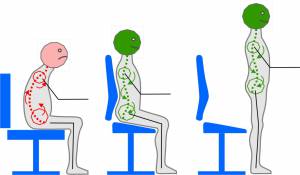














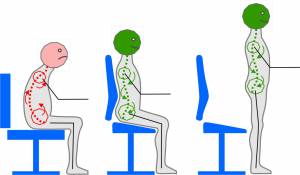 /a>
/a>
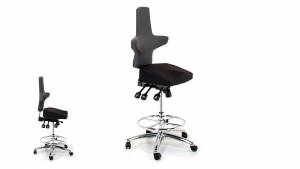 /a>
/a>
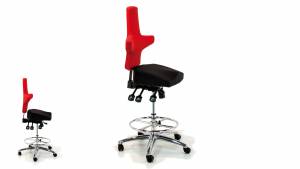 /a>
/a>
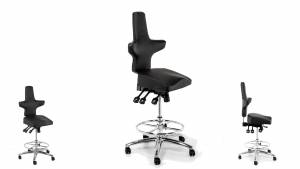 /a>
/a>
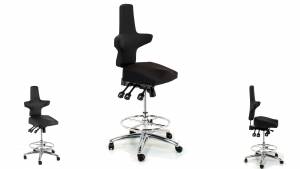 /a>
/a>
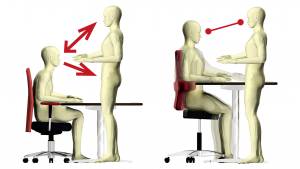 /a>
/a>
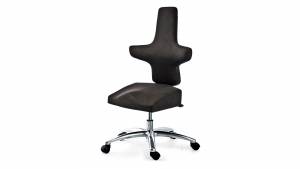 /a>
/a>
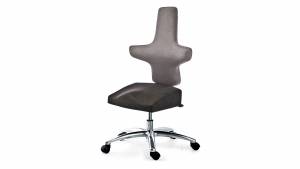 /a>
/a>
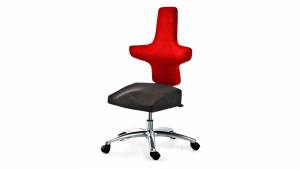 /a>
/a>
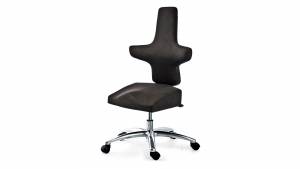 /a>
/a>






